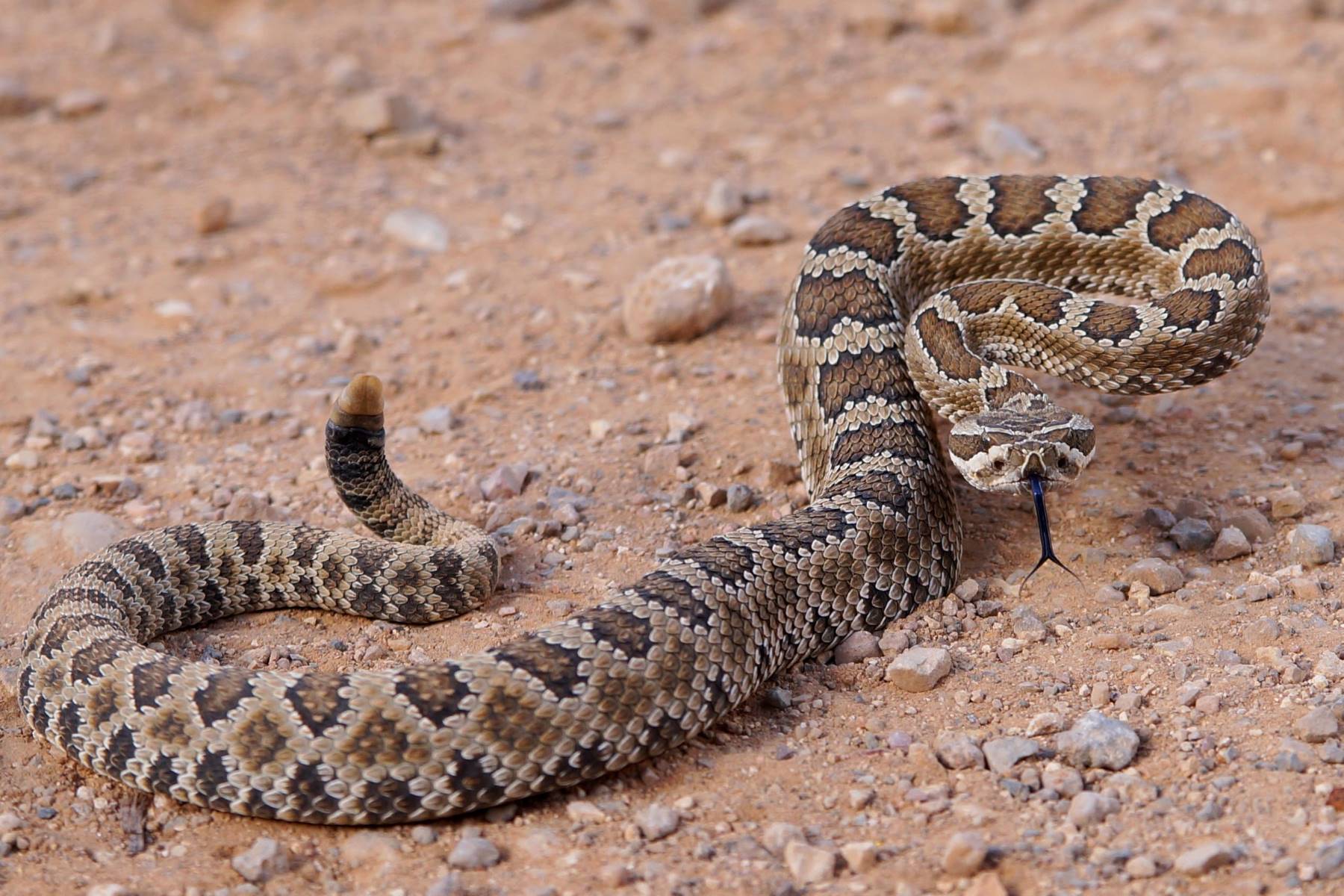
Rattlesnakes are fascinating creatures that are native to North and South America. Among the numerous species of rattlesnakes, the Great Basin Rattlesnake (Crotalus oreganus lutosus) stands out as a remarkable reptile. Found predominantly in the western United States, specifically in the Great Basin region, these snakes have evolved unique characteristics and survival strategies to thrive in harsh arid environments.
In this article, we will explore 11 fascinating facts about the Great Basin Rattlesnake. From their distinctive diamond-like patterns and rattling tails to their venomous bites and important ecological role, we will delve into the intriguing world of these captivating serpents. Whether you are a reptile enthusiast, a nature lover, or simply curious about the wonders of the animal kingdom, join us on this journey to discover the fascinating facts and secrets behind the Great Basin Rattlesnake.
Key Takeaways:
- Great Basin Rattlesnakes are skilled hunters with venomous bites, playing a crucial role in maintaining the balance of their ecosystem by controlling small mammal populations.
- These rattlesnakes are masters of camouflage, using their distinct color variations and intricate patterns to blend seamlessly into their surroundings, making them elusive predators.
The Great Basin Rattlesnake is a venomous pit viper.
Known scientifically as Crotalus oreganus lutosus, the Great Basin Rattlesnake is a species of pit viper found in the arid regions of the western United States. It is recognized by its triangular-shaped head and distinctive rattling sound.
These rattlesnakes are excellent hunters.
With their heat-sensing pits and infrared-sensing abilities, Great Basin Rattlesnakes are skilled predators. They can accurately strike and inject venom into their prey, which often consists of small mammals, birds, and lizards.
They rely on their venomous bite to immobilize prey.
The venom of the Great Basin Rattlesnake contains a potent mixture of enzymes and toxins that quickly incapacitate their prey. This allows the snake to efficiently consume its meal without much resistance.
Great Basin Rattlesnakes play an important role in the ecosystem.
As efficient predators, these rattlesnakes help control populations of small mammals, which can have a significant impact on the balance of the ecosystem. They play a vital role in maintaining the biodiversity of their habitat.
These snakes have distinct color variations.
The Great Basin Rattlesnake exhibits a range of color patterns, from light gray to brown or even reddish hues. This variation helps them blend into their surroundings, making it easier for them to ambush prey or avoid predators.
They hibernate during the winter months.
During the colder months, Great Basin Rattlesnakes go into a state of hibernation to conserve energy. They seek out sheltered areas such as rock crevices or burrows to protect themselves from the freezing temperatures.
These rattlesnakes are generally shy and non-aggressive.
Contrary to popular belief, Great Basin Rattlesnakes are typically not aggressive towards humans unless provoked. They would rather retreat and avoid confrontation, using their rattle as a warning signal to potential threats.
Like other rattlesnakes, their rattles grow with each shedded skin.
The iconic rattle of the Great Basin Rattlesnake is made up of layers of keratin, which is the same material found in human hair and nails. Each time the snake sheds its skin, a new segment is added to the rattle, creating a louder and more distinct sound.
They are skilled camouflagers.
The intricate patterns on the scales of the Great Basin Rattlesnake provide excellent camouflage against their natural surroundings. This allows them to blend in seamlessly with rocks, sand, and vegetation, making them difficult for both prey and predators to spot.
Mating season for these snakes typically occurs in the spring.
During the breeding season, male Great Basin Rattlesnakes engage in combat with each other to compete for the attention of females. The victorious male will then mate with the chosen female, after which she will give birth to live young.
They are an important part of Native American folklore and culture.
For many Native American tribes, the Great Basin Rattlesnake holds significant cultural and spiritual meaning. It is often portrayed as a symbol of protection, healing, and fertility, and its imagery can be found in various tribal artwork and rituals.
Conclusion
In conclusion, the Great Basin Rattlesnake is a fascinating and unique species that can be found in the western regions of North America. With its distinctive appearance and venomous nature, this snake commands both awe and respect. The Great Basin Rattlesnake plays a vital role in the ecosystem as an apex predator, helping to control the population of small mammals and maintain ecological balance. Its ability to survive in harsh desert environments and adapt to various climatic conditions showcases its resilience and evolutionary success. By understanding and appreciating these 11 Great Basin Rattlesnake facts, we can gain a deeper appreciation for the wonders of nature and the biodiversity that exists within our world.
FAQs
Q: Are Great Basin Rattlesnakes dangerous?
A: Yes, Great Basin Rattlesnakes are venomous and should be approached with caution. It is important to give them space and not provoke them.
Q: What do Great Basin Rattlesnakes eat?
A: These snakes primarily feed on small mammals, such as mice, rats, and ground squirrels. Occasionally, they may also consume birds or reptiles.
Q: Where can I find Great Basin Rattlesnakes?
A: Great Basin Rattlesnakes can be found in the western regions of North America, particularly in states like California, Nevada, and Utah.
Q: How big do Great Basin Rattlesnakes grow?
A: On average, adult Great Basin Rattlesnakes measure between 2 to 3 feet in length, with rare individuals reaching lengths of up to 4 feet.
Q: Are Great Basin Rattlesnakes nocturnal?
A: Yes, Great Basin Rattlesnakes are primarily active at night, allowing them to avoid extreme temperatures during the day and increase their chances of hunting prey.
Q: Do Great Basin Rattlesnakes hibernate?
A: Yes, these snakes do hibernate during the winter months. They gather in communal dens and become dormant until the weather becomes favorable for their activity.
Q: How long can a Great Basin Rattlesnake live?
A: The lifespan of Great Basin Rattlesnakes in the wild is approximately 10 to 15 years, although some individuals have been known to live longer in captivity.
Q: Can Great Basin Rattlesnakes swim?
A: Yes, they can swim and are capable of crossing bodies of water such as streams and rivers.
Q: Are Great Basin Rattlesnakes protected species?
A: The legal protection of Great Basin Rattlesnakes varies depending on the state and local regulations. In some areas, they may be protected, while in others, they can be killed if deemed a threat.
Q: How do Great Basin Rattlesnakes defend themselves?
A: Great Basin Rattlesnakes defend themselves by shaking their tail to produce a distinctive rattle sound, warning potential threats. They will strike only if they feel cornered or provoked.
Q: Can Great Basin Rattlesnakes be kept as pets?
A: While some individuals may choose to keep Great Basin Rattlesnakes as pets, it is important to consider the legal restrictions, proper permits, and expertise required to ensure the well-being of the snake and the safety of those around.
Was this page helpful?
Our commitment to delivering trustworthy and engaging content is at the heart of what we do. Each fact on our site is contributed by real users like you, bringing a wealth of diverse insights and information. To ensure the highest standards of accuracy and reliability, our dedicated editors meticulously review each submission. This process guarantees that the facts we share are not only fascinating but also credible. Trust in our commitment to quality and authenticity as you explore and learn with us.


